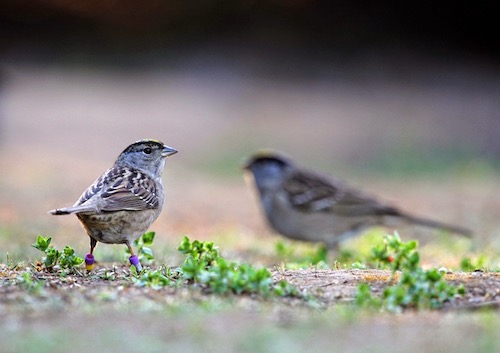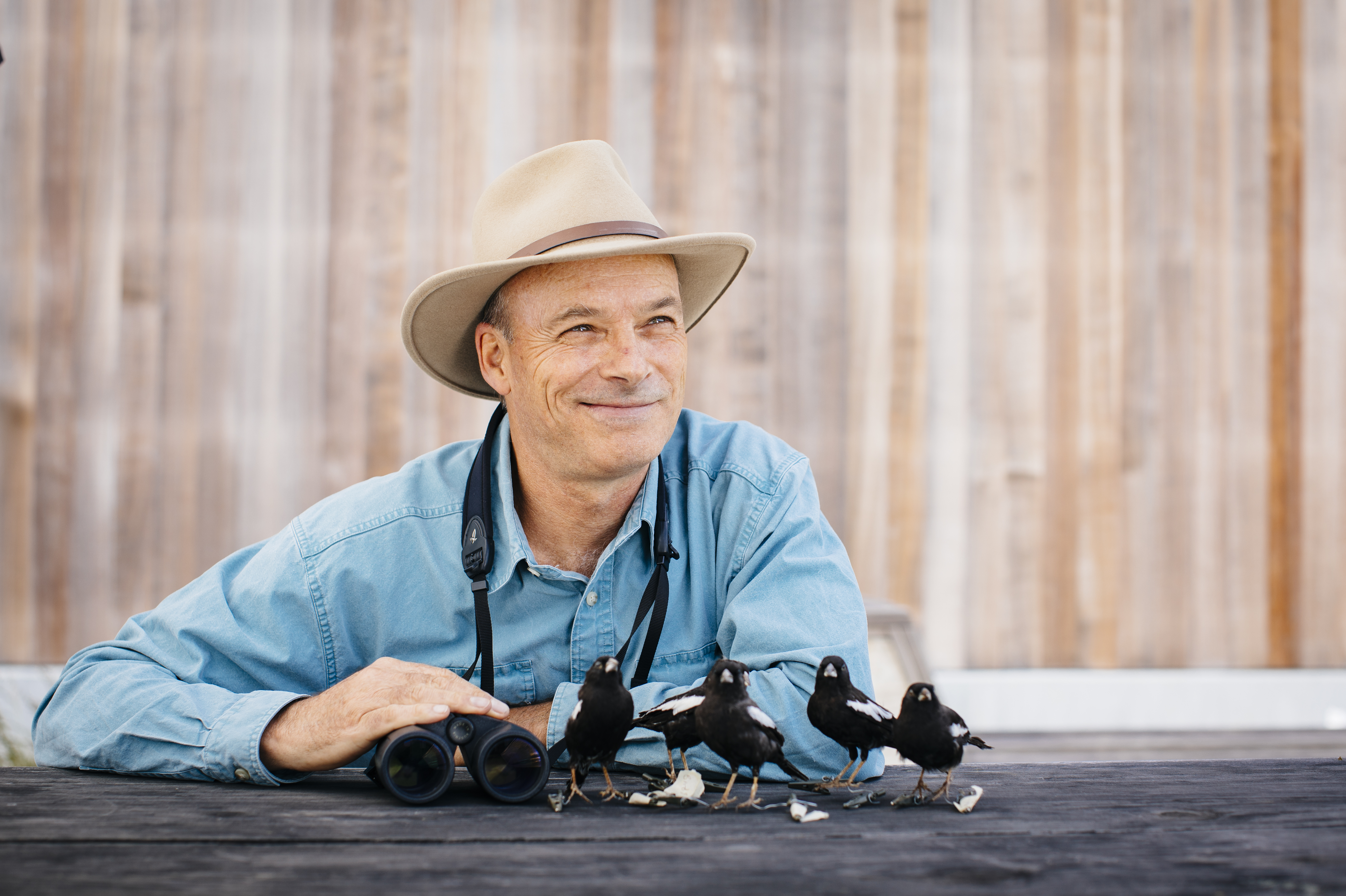Golden-crowned sparrows return to the same wintering sites each year after migrating thousands of miles. But their precision — which is often within the tens of meters — depends in part on the return of their friends. A new study, published today in the Proceedings of the National Academy of Sciences shows that the death of flockmates tends to weaken a golden-crowned sparrow’s connection to an overwintering site, while the number of winters spent there tends to strengthen it.
The research, conducted at the University of California, Santa Cruz Arboretum, uses ten years of golden-crowned sparrow data to improve ecologists’ understanding of social structure and overwintering behavior. UC Santa Cruz Professor of Ecology and Evolutionary Biology Bruce Lyon initially began the sparrow observations as a lab course. Daizaburo Shizuka and Alexis S. Chaine, former graduate students who are co-authors on the paper with Lyon, helped grow it into a long-term monitoring and bird-banding program. Over the last twenty years, the program has involved nearly 100 UC Santa Cruz undergraduate students in data collection and resulted in multiple papers.
One previous study from the site revealed almost primate-like communities within the overwintering sparrow population. The flocks change over time, but some birds very clearly stay together. The golden-crowned sparrows’ connections are not related to kinship. That complex social structure prompted the researchers to ask whether the birds come back each year because of an attachment to the space or to their flockmates.
To answer that question, they collected ten years of behavioral observations and compared changes in site fidelity — how precisely sparrows return to one location — to demographic turnover — who returns and who does not.
“These birds migrate thousands of miles to Alaska and northern Canada and then come back to pretty much the same set of bushes. That’s pretty astonishing,” said Lyon. “This paper showed that at least part of that fidelity is to return to be with their winter friends.” He adds that it was Shizuka’s expertise in social network analysis that opened the door for the study.
The team took observations from 2009 to 2019. They determined the spatial fidelity of individual birds to their wintering sites and identified close flockmates for each bird. They then compared how different variables affected that spatial fidelity. Sex and dominance status did not seem to play a role in whether a sparrow returned to the same spot. But the number of winters spent at a site and the loss of close flockmates did.
“These birds go off to Alaska, and only about 50% return,” said Lyon. “All those connections disappear, and that has implications.”
The authors speculate that long-term relationships with flockmates provide benefits to the sparrows that accumulate over an individual’s lifetime. Evidence shows that birds who know each other cooperate in foraging flocks and fight less. Researchers don’t yet know why site fidelity increases over several seasons, but it might be that strong familiarity with a location provides benefits.
The study adds to the limited body of work surrounding wintering behavior and social structure in birds. While many birds exhibit site fidelity, teasing out what brings them back to the same spot each year is more challenging for some species than others.
“We got lucky,” said Lyon. “It’s a great study site, and the birds are easy to work with, but it would be pretty challenging to study other groups that might do this.”
The long-term banding and monitoring program will continue at the UC Santa Cruz Arboretum. Lyon and colleagues plan to turn their attention to physiology studies soon, but they maintain that researchers should continue trying to understand social structure and behavior. This type of data can help ecologists make projections about whether populations are declining or stable, Lyon explains. And there are likely still surprises to be discovered.
“The fact that the sparrows overlap in structure, at least superficially, with primates and lots of other things is interesting,” he says. “And it means that we still don't really understand what the drivers are.”




